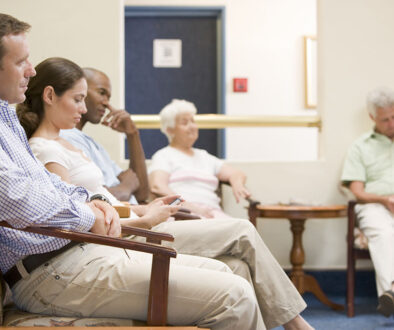4 Breast Cancer Myths
Knowledge is power, but the wrong “knowledge” is worse than ignorance. Sadly, a lot of misinformation is spread through well-meaning friends and family, whether through heartfelt advice or posted on your Facebook page.
When it comes to breast cancer, you can’t afford to believe these common myths. Each year around Breast Cancer Awareness Month they seem to resurface. Don’t be fooled! We’ve examined some of the most common misconceptions here:
Myth #1: Deodorant causes breast cancer
This misconception has been floating around for a while. It claims that cancer-causing substances in antiperspirants are absorbed through tiny nicks in the underarm area that are caused by shaving. It goes further to say that the lymph nodes are unable to rid the body of toxins through sweating because the deodorant interferes with this process.
Untrue.
The American Cancer Society debunks this myth in detail on their website, but in short, no epidemiologic studies have supported the claim that deodorant causes breast cancer, and no link has been found between underarm shaving and antiperspirant.
Certainly, nicks and cuts from shaving can always become infected, but it’s highly unlikely that any antiperspirant applied could reach the breast cells at all.
Myth #2: Most breast cancer is hereditary—so if no one in your family has breast cancer, you have a much lower risk
This one’s a little trickier. It’s always important to know your family history, but only 5-to-10 percent of breast cancer cases are actually the result of genetic defects.
This means that roughly 80-to-95 percent of breast cancer cases occur in those without a family history of cancer.
While having a mother, sister or daughter with breast cancer increases your risk, only around 20-to-30 percent of women with breast cancer have a family history.
Myth #3: Lumps are the only sign of breast cancer
A lot of emphasis is placed on detecting lumps—and it’s very important to have any lump examined by your doctor—but there are other symptoms of breast cancer that should not be overlooked. In fact, in certain types of cancer, such as inflammatory breast cancer, women do not notice a lump at all.
Other symptoms of breast cancer include:
- Nipple pain
- Nipples that turn inward
- Skin irritation or dimpling along the breast
- Any discharge other than breast milk
- Scaly or red nipples
If you have any of these symptoms, it’s important to talk to your physician as soon as possible.
Myth #4: Wearing a sports bra or an underwire bra increases your risk of breast cancer.
This urban legend has been around for a while. The claim is that breast compression from sports bras or underwire bras make it difficult for the lymph nodes to release toxins. The source of this myth is a book by two medical anthropologists whose research wasn’t conducted using standard scientific procedures.
Bottom line: simply not true. There’s no convincing scientific argument or study that directly ties wearing a bra to breast cancer.
However, obesity is a risk for breast cancer. Women who are overweight tend to have larger breasts and therefore are less likely to go without a bra. Still, this has nothing to do with the type of bra worn, but with the risk factor of being overweight.
We’ve only touched on four of the common myths that seem to circulate around the internet and from well-meaning, though misguided, friends. If you have any questions about breast cancer, talk to us. We’ll be glad to schedule an appointment with you.
Not sure how much you know? Have you fallen prey to these internet rumors and misinformation? Take this online quiz from the American Cancer Society to be sure you have your facts straight about breast cancer.
Remember, with an illness as serious as breast cancer, it’s important to have all the facts.




